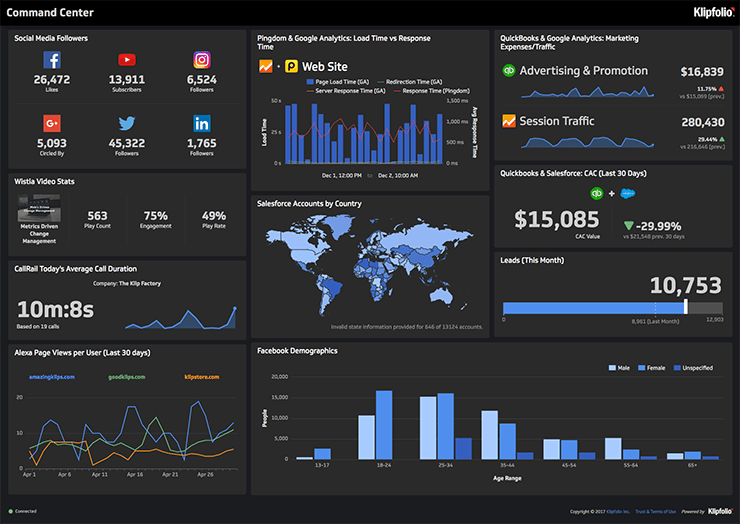Last updated on November 15th, 2022
As the name suggests, a website content audit is an exercise to ascertain, measure, and value the efficacy of the content of a campaign. Annually, a well-executed website content audit can deliver relevant feedback and insights that can unlock the complete potential of your content marketing strategy. In today’s world of massive storage capabilities on the cloud, many-a-times content is never removed or deleted.
This old content is stale, irrelevant, outdated and most importantly counterproductive as it may not be aligned to your brand strategy anymore. Thus, it makes sense to periodically review, evaluate, and measure our content and make sure that it is still relevant today. If not relevant, it needs to be recycled.
A website content audit reviews all of the content of a campaign (or even website) and evaluates the relevance and effectiveness of this content based on key performance indicators (KPIs) that are agreed upon earlier. These KPIs can be similar to the ones used to assess the campaign’s performance. An audit can also be used as a base to build future content marketing strategy.
An audit should not be confused with the content inventory exercise. Inventorying of content is simply a classification of all of a campaign’s content, whereas an audit is much deeper. Inventorying is only one part of the audit process.
Benefits of conducting a Website content audit
An efficient content audit will give you the following insights:
1. Focus areas and learnings for the future, both in terms of better search engine rankings and from a marketing perspective
2. Which is your most effective types of content? I.e. which content is performing the best
3. Which content does your target audience engage with most?
4. Which content is now irrelevant and needs to be recycled
5. Building a timeline for phasing out content
Though each of the above points is important in its own way, most of the time, companies conduct website content audits mainly for SEO and content marketing. So, there is no harm is delving deeper into the benefits of a website content audit on this front.
SEO: A website content audit is a great way of improving your content, so that it can be ranked better, and thus found more easily. By cataloguing the different sets of keywords, images and the other elements and comparing them to page ranking, you will be able to assess which content is more effective than others. It is like a feedback mechanism on your existing content. You can then take the key phrases that are better received and design your website/campaign with a greater emphasis on those words. If most of your traffic is organic, then conducting a content audit should not just be a yearly exercise, but rather an ongoing process.
Content Marketing: The other popular reason for conducting content audits is to evaluate the effectiveness of your current content marketing strategy. Similar to SEO, a website content audit helps in analyzing and mapping your content inventory to target audience response and engagement. There will be certain types of content or distribution mechanisms that have significantly greater engagement, so, by breaking these down and understanding the critical success factors, you can recreate this success in the future. Similarly, you can learn from content that did not do well, and avoid those factors and mechanisms.
How to conduct a Website content audit
This is where the work actually starts. Briefly speaking, a content audit is about collecting your entire content library (could be for a specific campaign, or could be for a website), and then making an inventory based upon classifications that suit your campaign (generally this is time based). This is then followed by a rigorous analysis of the indexed content and then using this analysis to deciding the actions to be taken regarding your content library – keep, improve, or remove. Have a look at this content audit guide to know all the steps:
Step 1: Create a content inventory:
There are many ways to doing this, and if you are doing this for the first time, be warned that this is the most time consuming part. We would strongly recommend using a tool for this, or building your own inventorying & indexing tool on Microsoft Excel. This step requires rigour and the ability to arranging data in a tidy manner. It is quite simple to build your own indexing tool on Excel. First of all, open and create a spreadsheet that will be used for auditing. You will be required to keep this neat and tidy.
Once you have made a framework for collection – then is the time to compile all the content from your internal databases and sitemaps. We would recommend gathering them separately and the organizing them later. Relatively speaking it is easy to collect data from internal sources, but the challenge comes, when trying to gather all your indexable URLs. Here we would advise using free tools like Google Analytics or maybe even paid tools like Webmaster(depending upon the number of indexable URLs that you may have). A simple crawler could do the trick, but may end up missing out on a few URLs.
Once you have gathered all of your content, it is them time to organize or index it onto your content spreadsheet. Once the framework for indexing is made, it is quite simple to arrange the content according to your chosen parameters. As a final word of advice, once organized, we would suggest going through the entire list to make sure the irrelevant content is removed, thereby sparing you additional work.
Step 2: Measure your inventoried content on relevant KPIs:
This part of the content audit is probably the most critical and will require you to think outside the box. First of all, you will have to select KPIs that are both relevant and can be used to measure all of your content uniformly. It is also a time that you should consider you additional metrics, than the basic ones you normally use. These metrics could be any of the following: mobile friendliness, page loading speed, content buffering speed, uniqueness of content, organic conversions, time spent on site or even ability to influence. Before proceeding further we would like to warn you that some of these metrics may not point out as clear results as one would hope.
Many-a-times, the results have to be taken with a pinch of salt, as they may lead to multiple conclusions. We would suggest using multiple parameters and keeping an open mind. For example, some customers may know exactly what they are looking for and may spend as little time as possible on your content (this is because they know what they need) and this would lead to a speedy conversion, but the time spent on your content by this customer is very less.
Alternatively, another customer may spend a lot of time on your content, thereby raising time spent on site, but may not lead to conversions. So, we would recommend using multiple metrics to evaluate your content, so that these scenarios are accounted for.
Step 3: Build a Dashboard to compare asset data
Once you have evaluated all of content, it is time to gather all of this data and arrange it in a logical manner to derive insights. Once again, we would recommend either using an existing tool in the market or creating a tool in-house. It is important to build a dashboard that can accomplish analysis at both a macroscopic level (analyzing all the content together in one shot) and a microscopic level (pitting two pieces of content next to each other and comparing)
Step 4: Carry out the Website Content Audit
This is the part where all the action happens. Once you have built your dashboard and populated it with all the measuring data from step two – it is finally time to audit your content. Now is the time to analyze what content isn’t meeting your critical parameters – this could be due to it being irrelevant or due to a lack of quality, or even due to the existence of better substitutes.
We would recommend making a scale and fitting all of your content on this scale. On the far left you would have content that needs to be removed, and on the far right you would have your best content that needs to be emulated or kept the same. Near the middle you have content that isn’t ideal but can be improved. Then you can draw the line, below which all content needs to be removed and above which, can be improved. This is also the stage, where we would recommend using SEO or content marketing tools, depending upon your objective.
The reason for this is that, the results of your analysis (across various parameters – similar to the scale mentioned previously) will churn out a treasure trove of data that can be converted to actionable insights.
A few examples of this data are
1. SEO: Page title, keywords, content meta data, last updated, the bounce rate, average time spent on content and 404 links
2. Content Marketing: word count, mobile friendliness, relevance and engagement
Step 5: Take Action
Once you have audited all of your content, the final step is to take action based upon the results of your audit. Before you can do that though, you will need to delve deep into your analyzed data to gain insights, draw conclusions and decide what action would be best for your campaign. Depending upon your overall goals you could carry out any of the following actions:
1. Removing irrelevant content or recreating it
2. Promotion of your best performing content
3. Improving existing content (Sometimes it is easier to improve existing content, as compared to creating new content)
4. Tweaking your SEO or Content marketing strategy based upon feedback gathered from current campaign
Website Content Audit Checklist
To ensure that you have carried out your auditing in the right way, check the following off your list:
The Target Audience: Make sure that you have all the necessary data about your target audience. What languages do they speak? What device do they use? Where do they live? What are the pages they visit more or the terms they search for most? Questions like and similar to these will help you understand the kind of content you need to keep and the kind you need to remove for a more effective approach.
The Navigation: Although not a direct part of content auditing, navigation is still essential to be touched upon. Make sure that your users are able to go from one content to the other easily. Another thing to keep in mind is that appropriate and effective CTAs and internal navigation links are provided after/in all your content pieces. This will allow you to increase your visibility significantly without any external help.
The Sharing of Content: No matter how good or effective the content is, if the user is not encouraged to pass it forward to people in their community, it is going to go to waste. You will only be able to attract users that you have approached or the ones that have merely stumbled upon your content. However, ensuring that you create shareable content would allow your users to be a source of credibility and enable their respective circles to find and hopefully enjoy your content as well. Provide appealing and relevant content along with appropriately placed sharing buttons to increase shareability.
Upgrading your content audit experience
There are three ways in which you can use this exercise of a content audit to glean important information that you can use as a part of your content marketing strategy:
1. Analysis of your competitors:
You can carry out a content audit on all the publicly available competitor content. This will not only help you find gaps to fill, but also is a valuable exercise in picking up best practices. If time permits, carrying out content audits of your competitive frame of reference, will help you understand all of your competitors strengths and weaknesses, and this in turn should help you build unique content in the future by filling gaps. Similarly, you can help your own SEO efforts by analyzing and then incorporating content that is working well for your competitors.
2. Understanding Social Media Signals:
Sometimes, a content audit can reveal hidden gems about trends on social networks that may give you ideas about content that you can create that will be successful in the future.
3. Links:
Carrying out a content audit also lets you know which pages have links, where these links are from, and just how powerful these links are in the eyes of Google. These lessons are great in tinkering with your content marketing strategy and making it more effective. In the end, there are many ways of performing a website content audit, and you should select one that is best suited to your needs.
A content audit is not a process that you will perform only once, so the content audit process itself can be improved and built to exactly meet your needs over many iterations. A content audit should be an integral part of your content marketing operation as it is an element that forces you to become better every single time.













